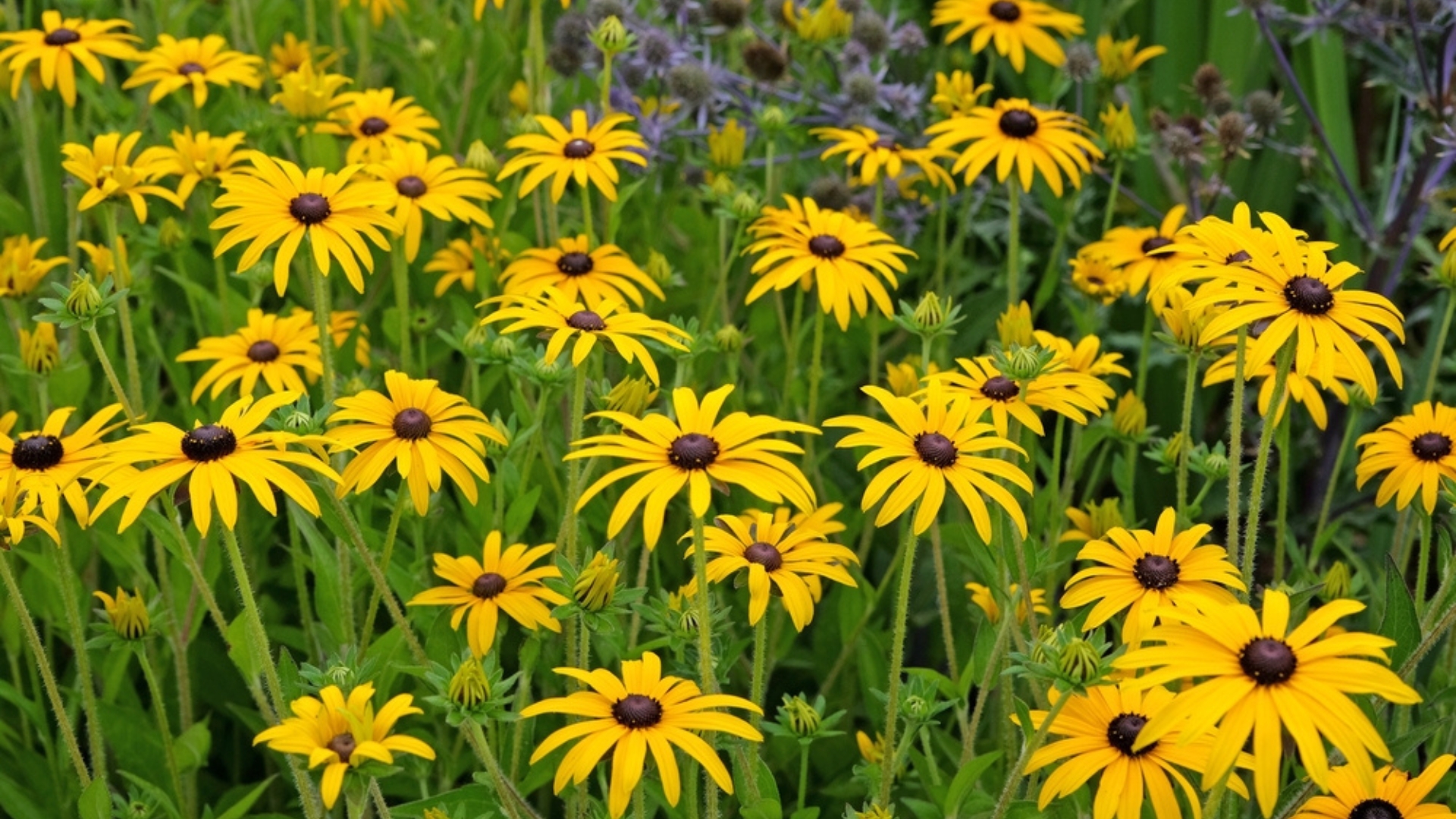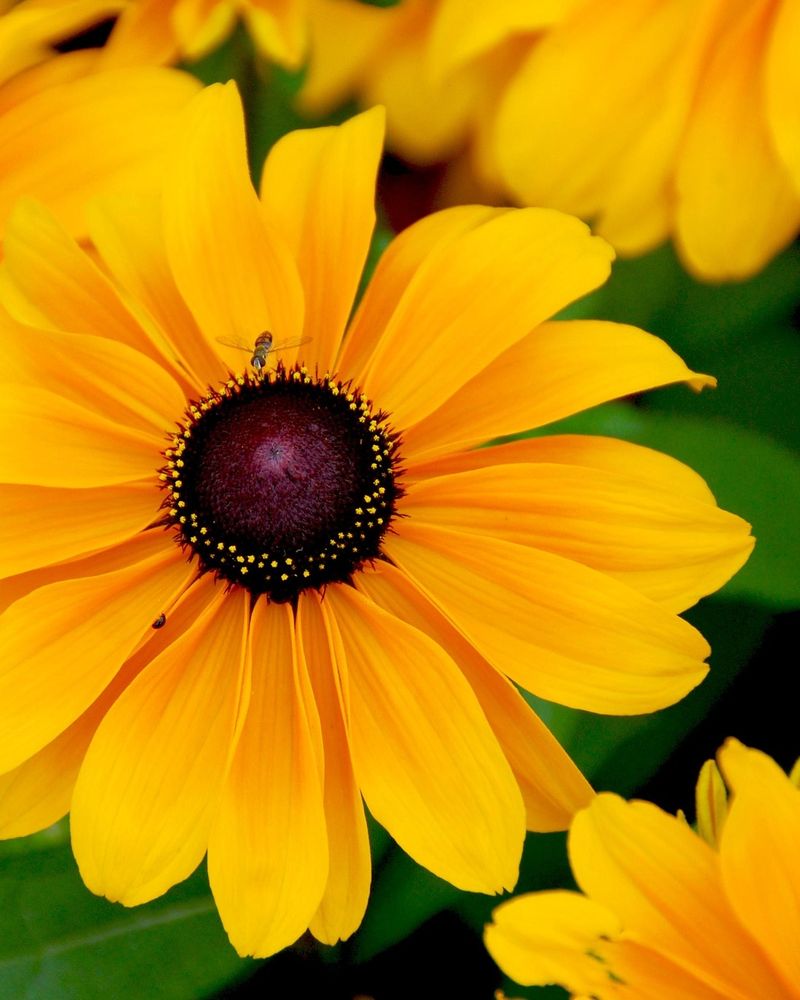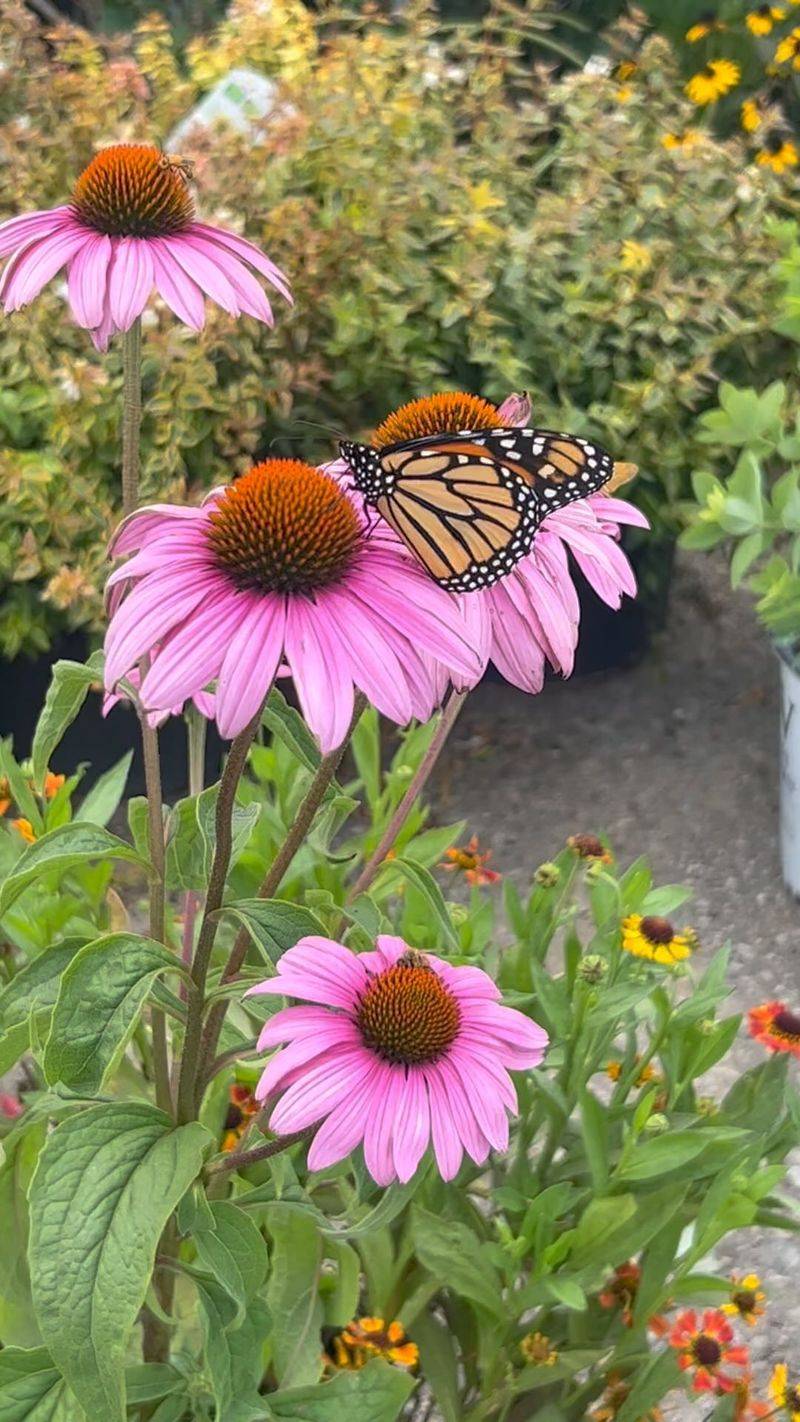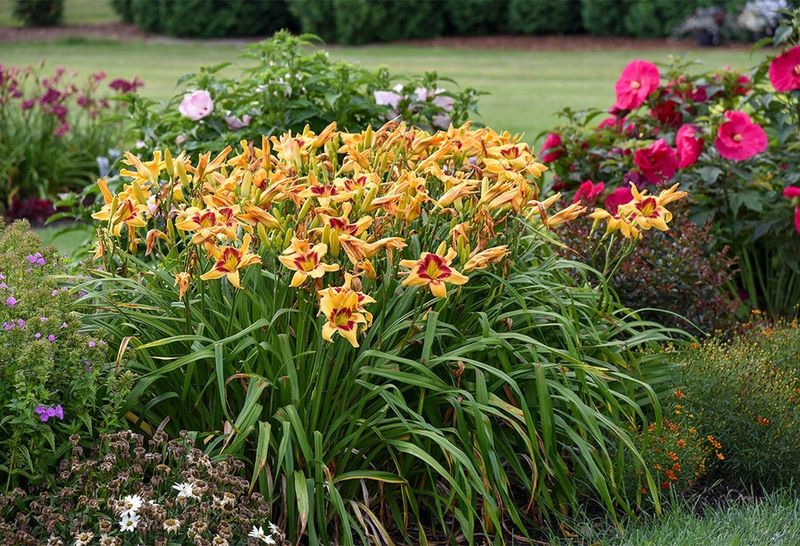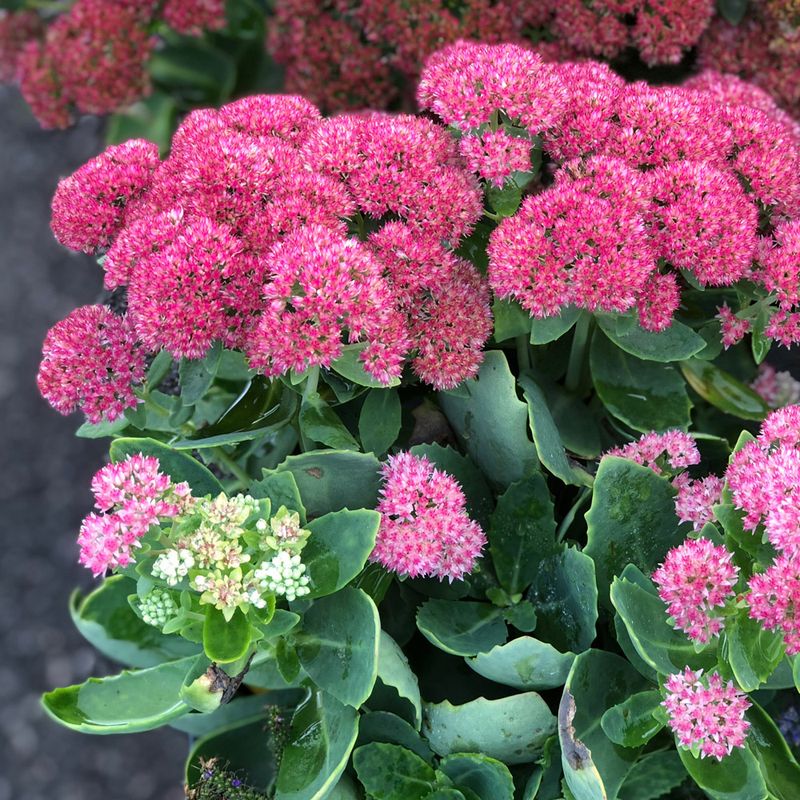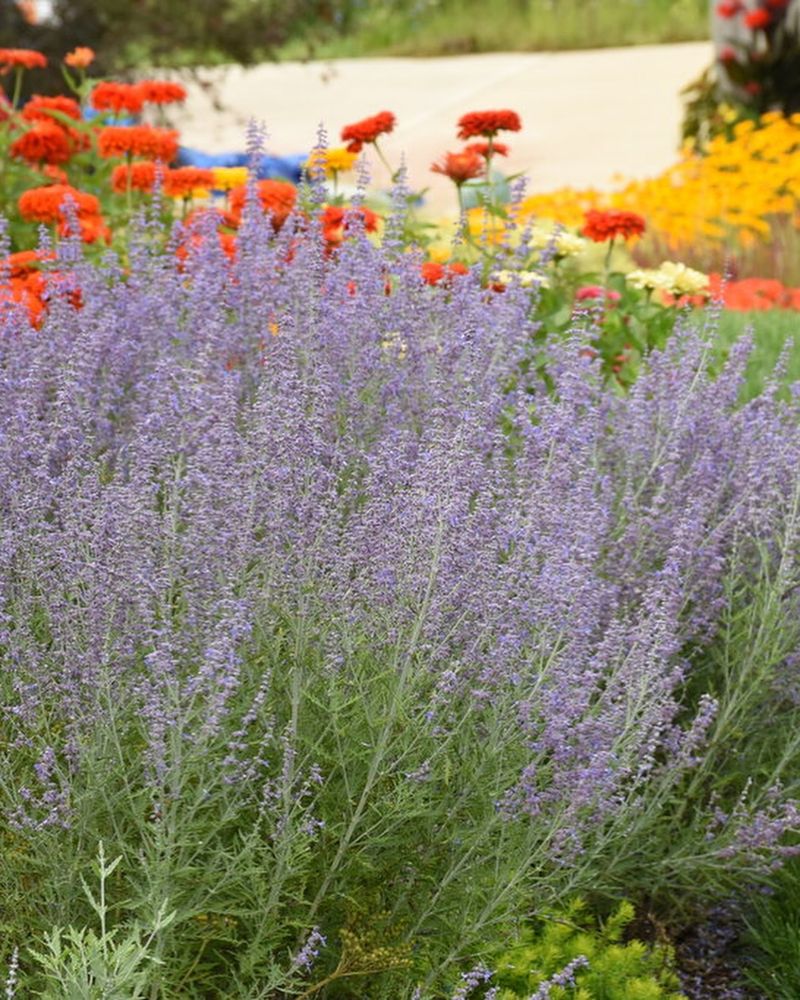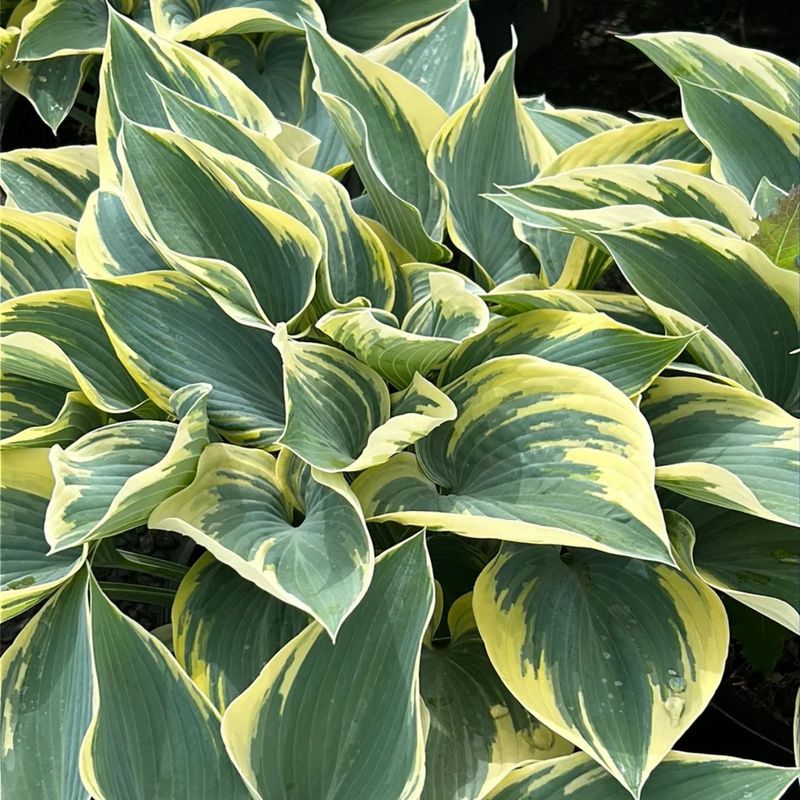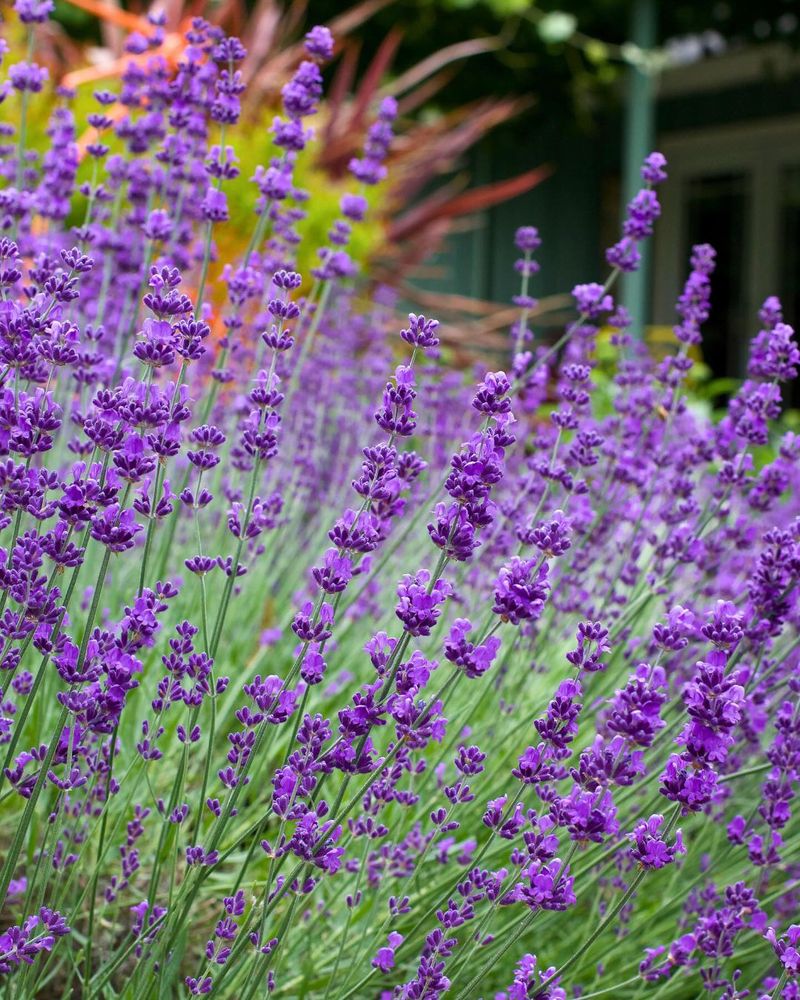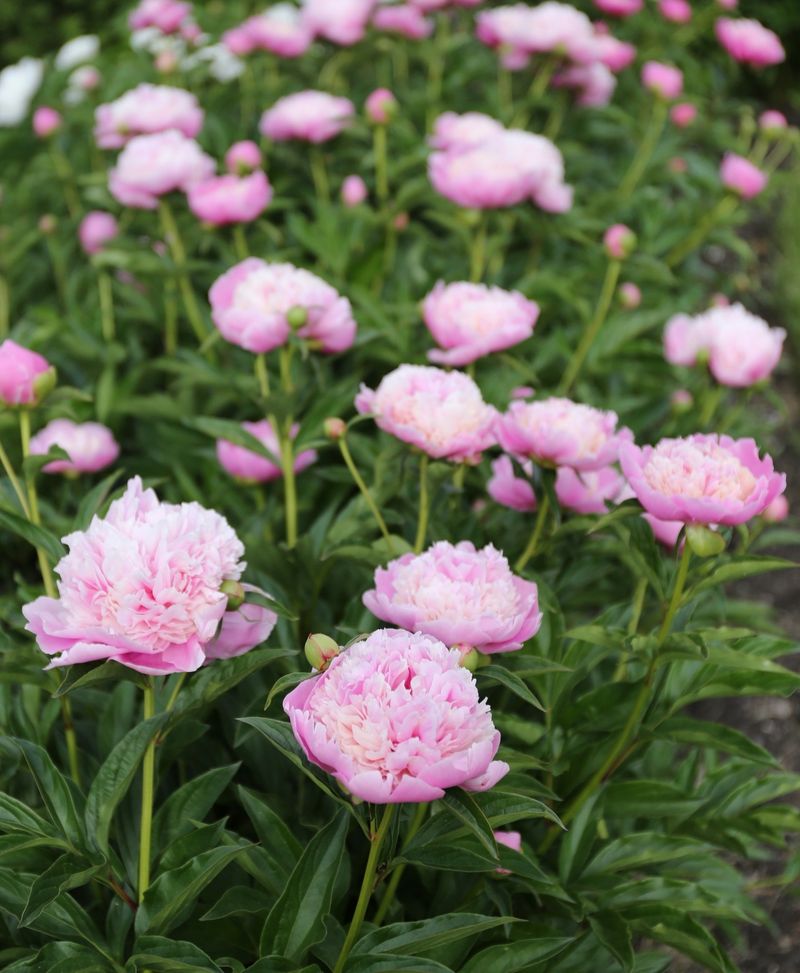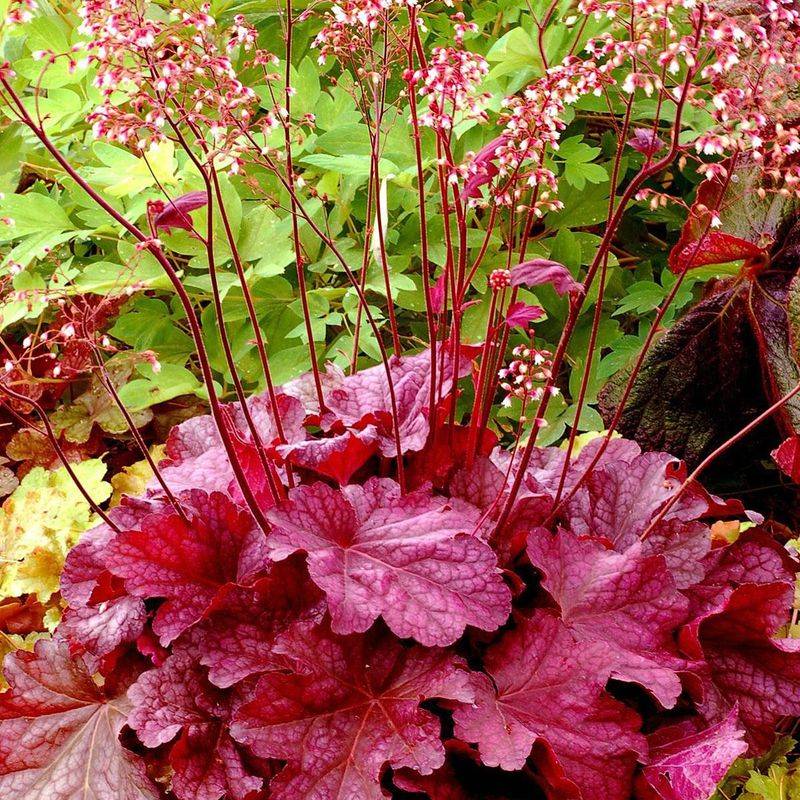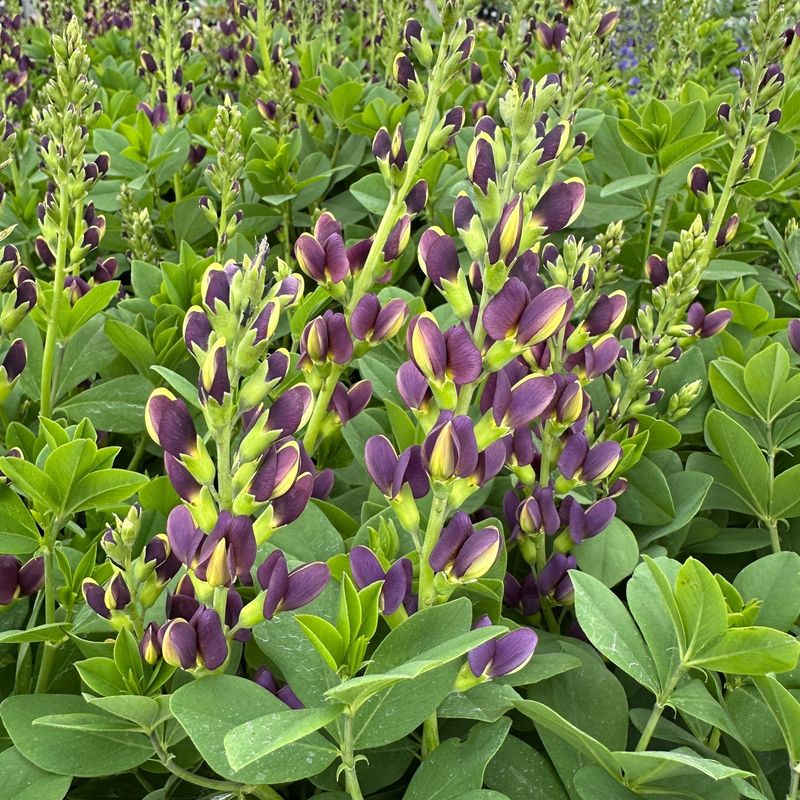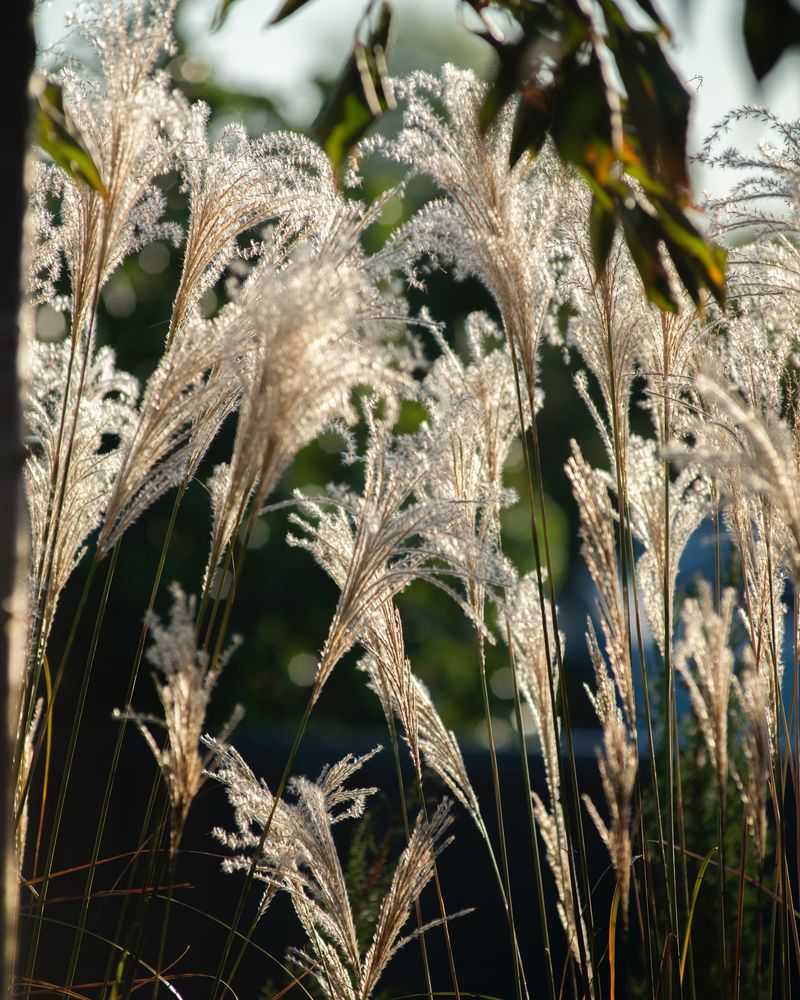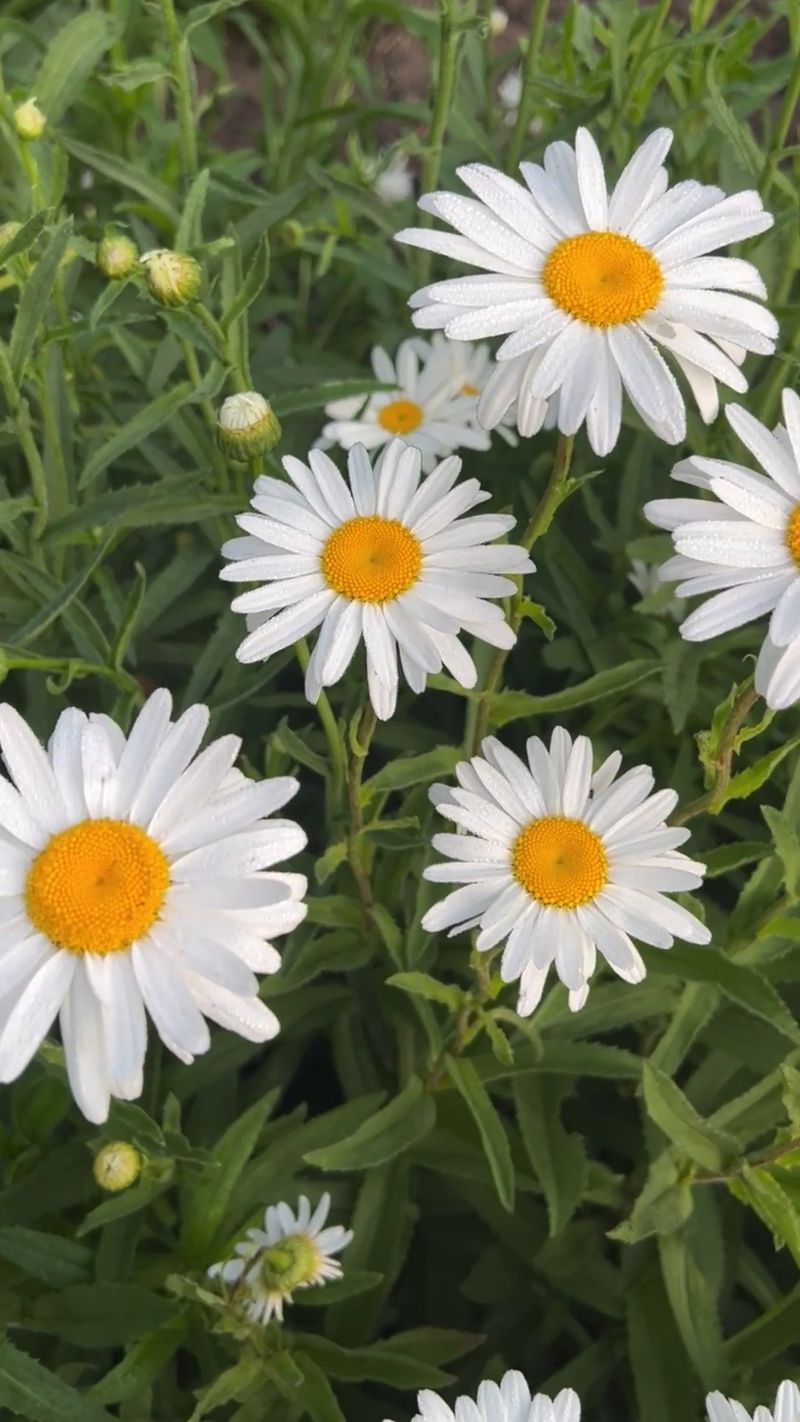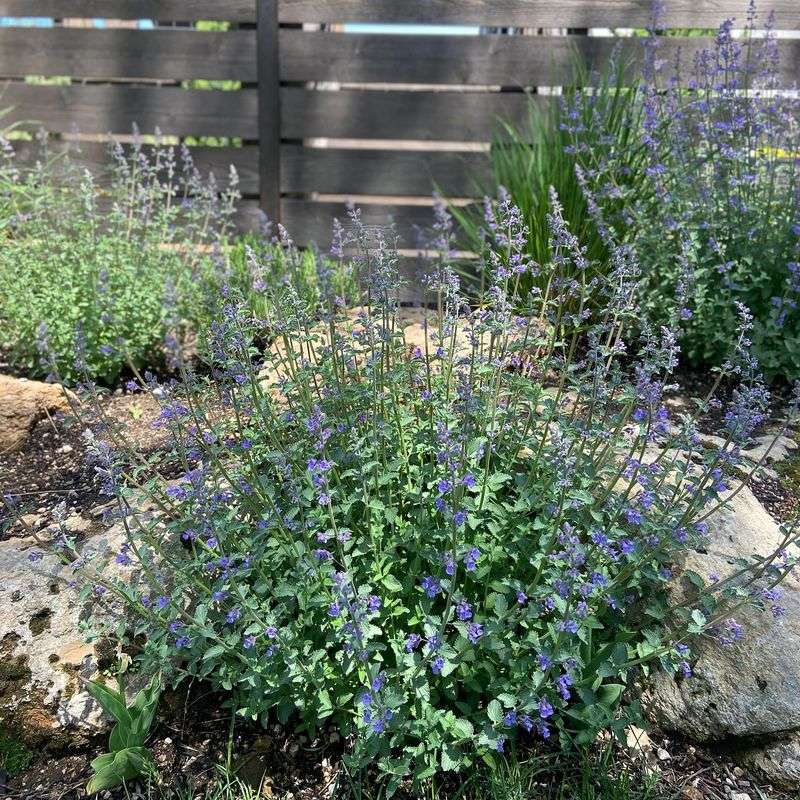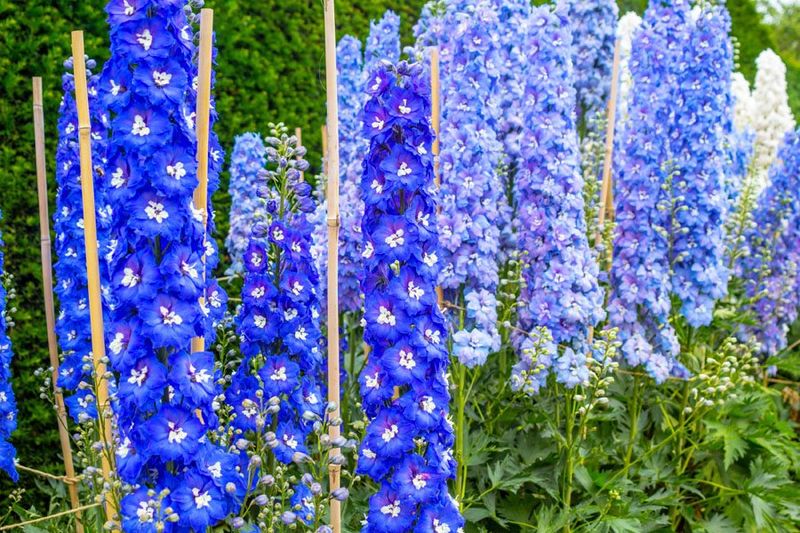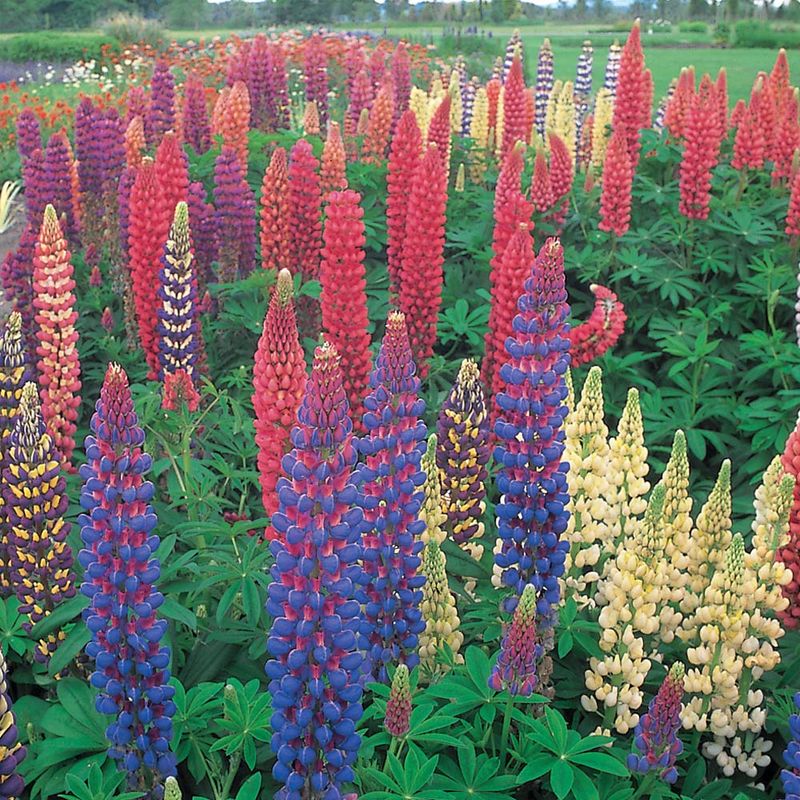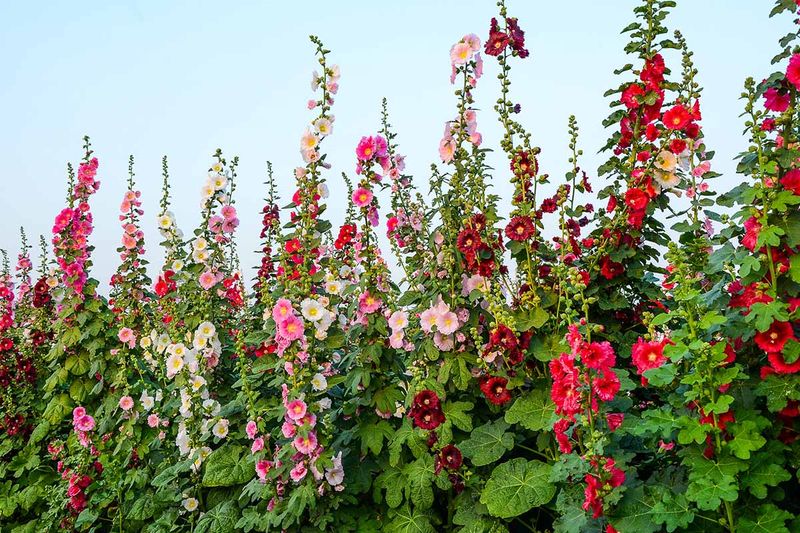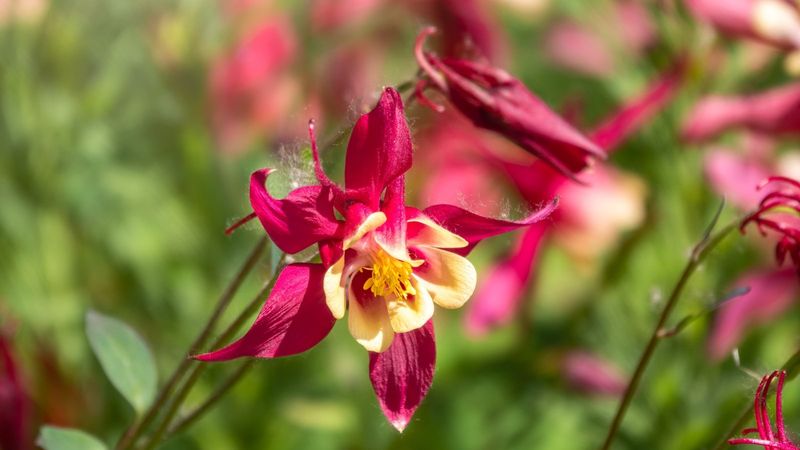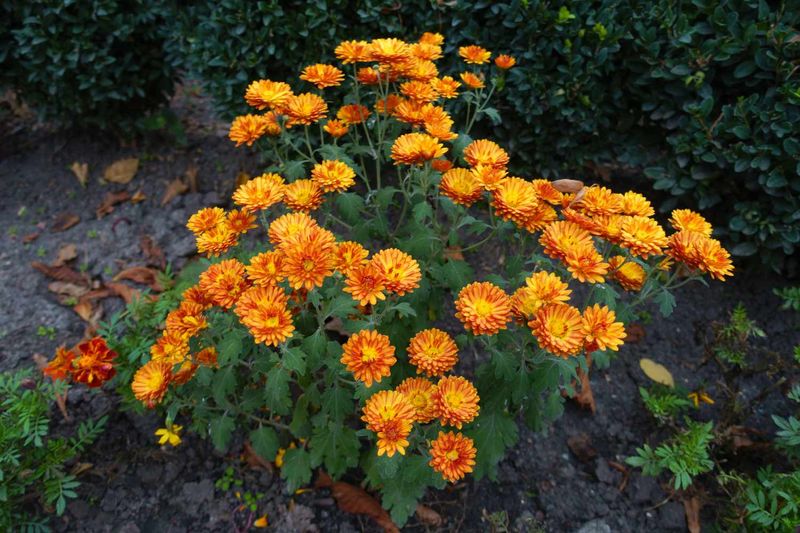Choosing the right perennials can transform your garden into a low-maintenance paradise that blooms year after year. These hardy plants save you time, money, and the hassle of replanting every spring.
Not all perennials are created equal though – some are workhorses that thrive with minimal care while others promise more than they deliver.
1. Black-Eyed Susan
Sunny golden petals surrounding dark centers make Black-Eyed Susans instant garden cheerleaders. They bloom abundantly from midsummer to fall, standing tall through heat and drought without complaint.
Plant these native wildflowers in full sun and watch pollinators flock to your garden. They self-seed generously, creating natural colonies that spread their sunshine across your landscape.
Even first-time gardeners find success with these forgiving plants that return reliably for years, often growing stronger with each passing season.
2. Coneflower (Echinacea)
Tough as nails yet stunningly beautiful, coneflowers bring months of color to your garden while laughing off summer heat. Their distinctive raised centers surrounded by drooping petals come in purples, whites, yellows, and even fiery oranges.
Butterflies can’t resist these native prairie plants, turning your garden into a lively ecosystem. After flowering ends, leave the seed heads standing for winter interest and to feed hungry birds.
Modern varieties offer double blooms and unexpected colors, but all maintain the iron-clad constitution that makes them perfect for busy gardeners.
3. Daylily
Virtually indestructible, daylilies thrive in conditions that would kill lesser plants. Each flower lasts just one day (hence the name), but plants produce so many buds that the show continues for weeks.
Available in thousands of varieties ranging from delicate pastels to vibrant reds and oranges, there’s a daylily for every garden style. Their arching, grass-like foliage looks attractive even when not in bloom, providing structure throughout the growing season.
Divide these vigorous growers every few years, and you’ll have plenty to share with friends or expand your own collection.
4. Sedum ‘Autumn Joy’
Succulent stems topped with broccoli-like clusters transform throughout the season in a magical display. Starting green in summer, the flower heads morph to pink, then rusty red, and finally copper-brown for winter interest.
Drought-resistant and practically maintenance-free, ‘Autumn Joy’ sedum asks for nothing but offers everything. Bees and butterflies swarm the blooms during late summer when many other flowers have faded.
Plant these sturdy perennials in poor soil with good drainage, and they’ll reward you with decades of reliable performance and four-season appeal.
5. Russian Sage
Clouds of lavender-blue flowers hover above silvery foliage, creating a dreamy effect from midsummer until frost. Russian sage thrives in hot, sunny spots where other plants struggle, actually preferring poor soil to rich.
Once established, this drought-tolerant beauty needs almost no water or care. The aromatic foliage naturally repels deer and rabbits, while attracting beneficial pollinators to your garden.
Pair it with yellow or orange flowers for a stunning color contrast, or let its misty purple blooms soften hard landscape elements like walls and fences.
6. Hostas
Shade garden superstars, hostas transform dark corners into lush retreats with their bold, often variegated foliage. Coming in sizes from tiny ‘Mouse Ears’ varieties to massive ‘Empress Wu’ specimens reaching three feet tall, there’s a hosta for every spot.
Their architectural leaves unfurl in spring, creating season-long interest even before delicate flower stalks rise above the foliage. Blue, green, gold, or cream—hostas offer endless color combinations that brighten even the darkest garden spaces.
Just keep slugs at bay and protect from deer who consider them salad bars!
7. Lavender
Fragrant purple spikes rising from silvery foliage transport you straight to the French countryside. Lavender’s intoxicating scent perfumes the air while attracting bees and butterflies by the dozens.
Plant in full sun with excellent drainage—lavender hates wet feet more than anything. Once established, these Mediterranean natives thrive on neglect, actually producing more oils and stronger scent when slightly stressed.
Beyond their garden beauty, harvest stems for drying, sachets, cooking, or homemade bath products. English varieties are hardiest in cold climates, while French and Spanish types excel in hot regions.
8. Peony
Generations of gardeners have treasured peonies for their spectacular blooms and incredible longevity—some plants live 100+ years! Their lush flowers in whites, pinks, and reds perfume the late spring garden with an intoxicating fragrance.
Plant these heirloom beauties in fall, making sure the “eyes” (growth buds) sit just 1-2 inches below soil level. They prefer not to be moved, so choose their location carefully.
After their brief but magnificent flowering period, peonies provide attractive glossy foliage that remains handsome throughout summer and often turns reddish in fall.
9. Yarrow
Flat-topped flower clusters in yellow, white, pink or red hover above feathery, aromatic foliage from early summer through fall. Native yarrow varieties support beneficial insects while naturalized types offer expanded color options.
Practically indestructible, yarrow thrives in poor soil and drought conditions where other perennials surrender. The fernlike foliage remains attractive all season, often maintaining a presence through winter in milder climates.
Cut flowers last for weeks in arrangements and can be dried for everlasting bouquets. Deadhead spent blooms to encourage repeat flowering throughout the growing season.
10. Coral Bells (Heuchera)
Foliage takes center stage with coral bells, offering year-round color in shades from lime green to deep purple, often with silver veining or dramatic ruffles. These versatile perennials bridge the gap between flowers and shrubs with their semi-evergreen leaves.
Delicate flower stalks rise above the colorful mounds in summer, attracting hummingbirds with their tiny bell-shaped blooms. Modern varieties perform well in both shade and sun, though they appreciate afternoon protection in hot climates.
Plant them along pathways or border edges where their colorful leaves can be appreciated up close throughout the seasons.
11. Baptisia (False Indigo)
Lupine-like spires of blue, yellow, or white flowers crown this native prairie plant in late spring, followed by interesting seed pods that rattle in fall breezes. Baptisia develops slowly but surely into an impressive, shrub-like specimen reaching 3-4 feet tall and wide.
Deep roots make it extremely drought-tolerant once established, though they also make it resistant to moving. Choose its location carefully! The blue-green foliage remains attractive all season, turning blackish after frost.
Modern hybrids offer expanded color options beyond the traditional blue, including bicolors and richer hues.
12. Ornamental Grasses
Movement and texture flow through the garden when ornamental grasses join the party. From short blue fescues to towering miscanthus varieties reaching 8+ feet, these easy perennials add drama and four-season interest.
Summer brings striking seedheads that catch morning dew like strings of diamonds. Fall transforms many varieties into golden, burgundy, or copper sculptures that whisper and sway with every breeze.
Leave them standing through winter for habitat and visual interest, then cut back in early spring before new growth emerges. Most require dividing only every 3-5 years.
13. Shasta Daisy
Classic white petals surrounding golden centers bring cheerful simplicity to summer gardens. Shasta daisies bloom abundantly for weeks, providing armloads of cut flowers while still looking full in the garden.
Plant in full sun with average soil for best performance. Shorter varieties like ‘Becky’ rarely need staking, while taller types may appreciate support in windy locations.
Divide every 2-3 years to maintain vigor and prevent the centers from dying out. These easy perennials combine beautifully with virtually any garden style from cottage to contemporary.
14. Catmint (Nepeta)
Lavender-blue flower spikes dance above aromatic gray-green foliage, creating months of color with minimal effort. Catmint starts blooming in late spring and continues well into fall if sheared back after the first flush.
Bees buzz constantly around these fragrant flowers, while deer and rabbits typically avoid the mint-scented leaves. Newer varieties like ‘Walker’s Low’ and ‘Cat’s Pajamas’ stay compact and tidy without flopping.
Drought-tolerant once established, catmint thrives in average to poor soil and requires almost no care beyond an occasional haircut to refresh blooms.
15. SKIP: Delphinium
Gorgeous spires in heavenly blues, purples, and whites tempt gardeners with their cottage garden charm, but disappointment often follows. Delphiniums demand perfect conditions—rich soil, cool temperatures, and protection from both wind and hot afternoon sun.
Even with ideal care, these fussy perennials rarely live more than 2-3 years in most gardens. Their hollow stems snap easily in summer storms, requiring careful staking throughout the growing season.
Slugs and mildew further challenge success rates, making these short-lived beauties high-maintenance heartbreakers for all but the most dedicated gardeners in perfect climates.
16. SKIP: Lupine
Magnificent flower spikes in rainbow colors create irresistible nursery displays, but lupines rarely deliver on their promise. Most varieties struggle to return after their spectacular first-year showing, especially in regions with hot, humid summers.
Their deep taproots resist transplanting and division, making them difficult to maintain or move. Aphids frequently infest the flower stalks, while powdery mildew often disfigures the foliage by midsummer.
Seeds from hybrid varieties don’t come true to the parent plant, resulting in offspring that revert to less impressive colors. Native lupines perform better but lack the showy qualities of hybrids.
17. SKIP: Hollyhock
Towering flower stalks create dramatic vertical impact, but hollyhocks typically behave more like biennials than true perennials. After their second-year bloom, plants often decline rapidly or die completely, requiring constant replacement to maintain their presence.
Rust disease creates unsightly orange spots that spread quickly across leaves, often causing them to brown and drop by midsummer. The tall stems frequently need staking to prevent toppling, adding to maintenance requirements.
While they self-seed readily, the resulting seedlings may not match the parent plants if growing near other varieties, leading to color disappointments.
18. SKIP: Columbine
Fairy-like blooms dancing above delicate foliage create spring magic, but columbines rarely maintain their charm beyond a few seasons. Most varieties are short-lived perennials that decline after 2-3 years, requiring constant renewal from self-seeding to maintain their presence.
Leaf miners frequently tunnel through the foliage, creating unsightly white trails that can severely damage the plant’s appearance by early summer. Once flowering finishes, the foliage often looks ragged and unattractive.
Self-seeded offspring frequently revert to simpler forms and colors than their fancy hybrid parents, disappointing gardeners seeking consistent performance.
19. SKIP: Mums
Fall garden centers overflow with gorgeous potted mums in autumn colors, but these plants rarely return successfully the following year despite being classified as perennials. The problem lies in timing—these late-season beauties have little opportunity to establish roots before winter arrives.
Even when they do return, the compact, flower-covered shape from the garden center transforms into a leggy, less impressive plant that requires frequent pinching to maintain any semblance of the original form.
Hardy varieties exist but require planting in spring for best perennial performance—not the fall impulse purchases most gardeners make.
20. SKIP: Foxglove
Speckled bell-shaped flowers on dramatic spires create woodland magic, but most foxgloves are actually biennials masquerading as perennials. They form leafy rosettes the first year, flower magnificently the second year, then typically die after setting seed.
Perennial varieties exist but generally lack the impressive stature and abundant blooms of their biennial cousins. All parts of the plant are highly toxic, making them problematic in gardens with children or pets.
While they self-seed readily, maintaining consistent garden presence requires allowing somewhat messy seedheads to remain and seedlings to develop in not-always-convenient locations.

